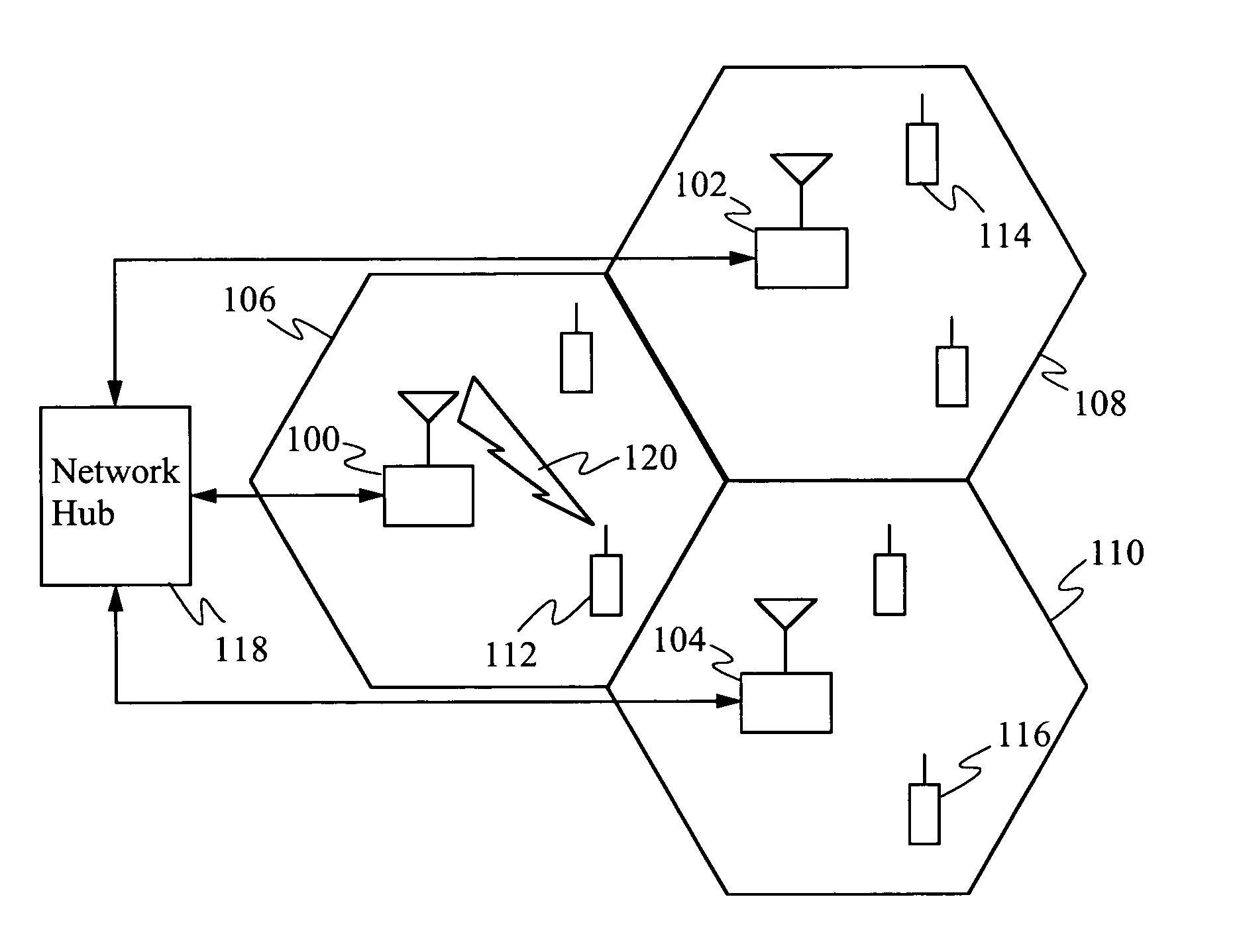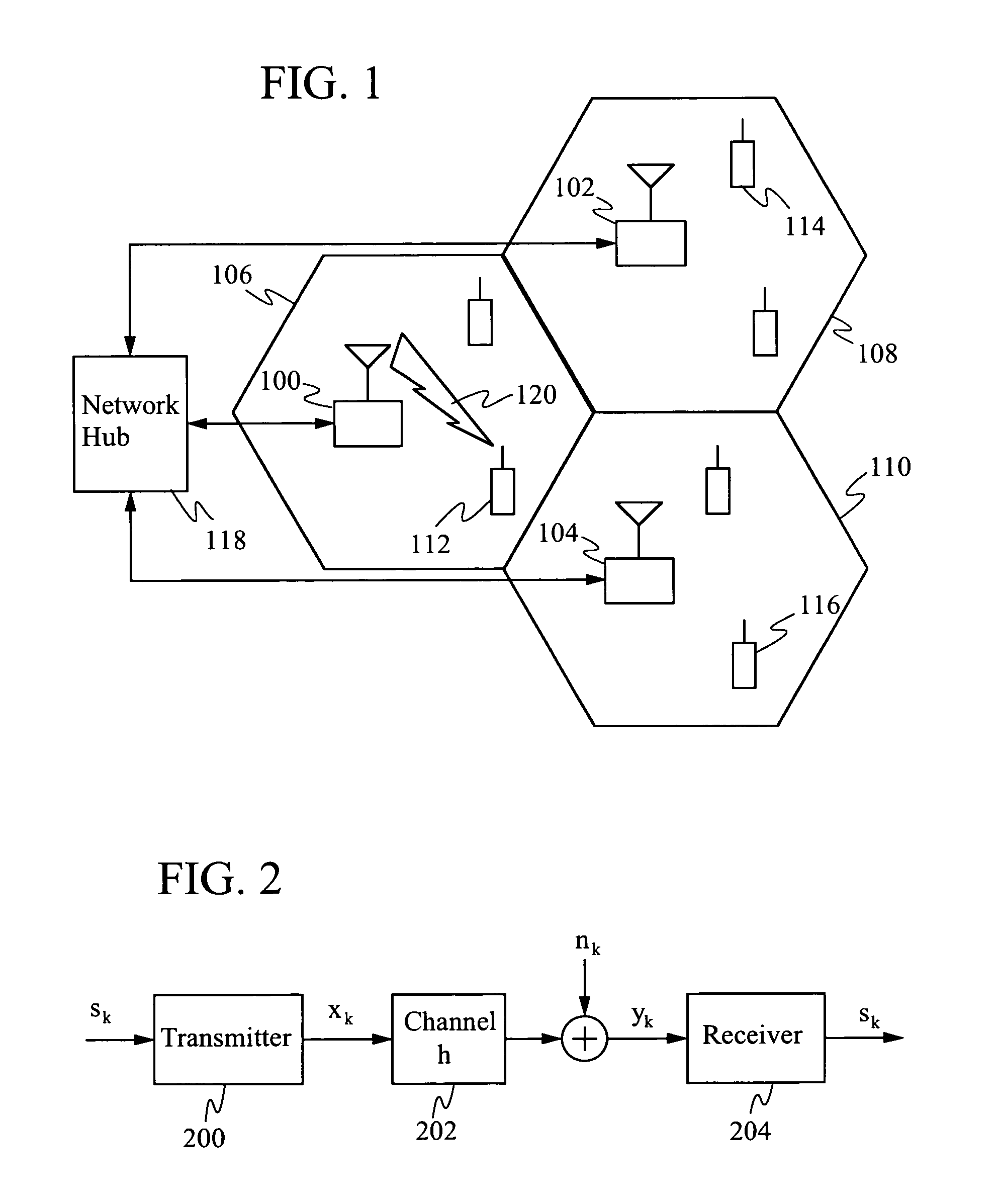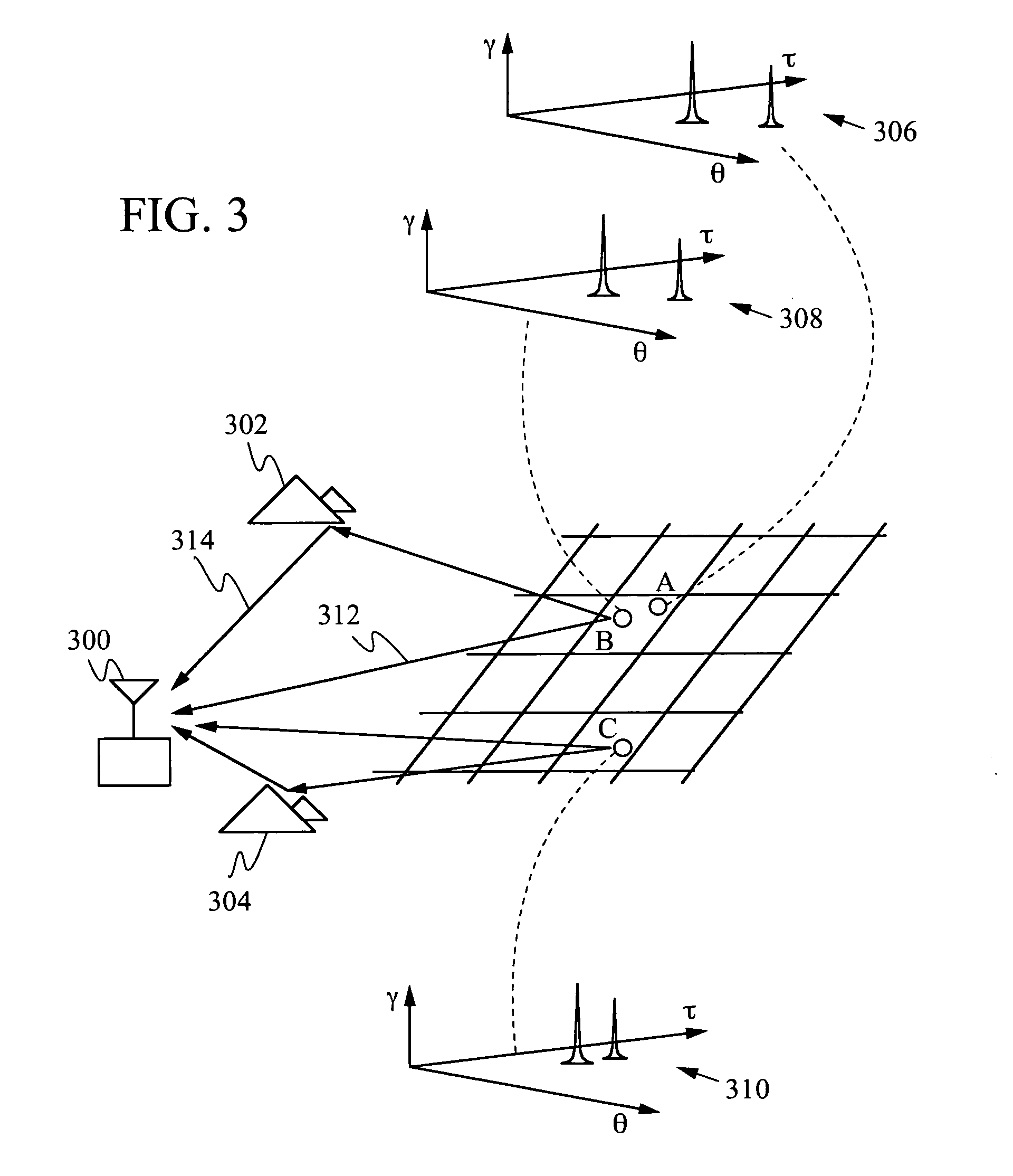Location-assisted wireless communication
- Summary
- Abstract
- Description
- Claims
- Application Information
AI Technical Summary
Benefits of technology
Problems solved by technology
Method used
Image
Examples
Embodiment Construction
[0015] Wireless channel characteristics in general have dependence on time, space, and frequency. Different channel characteristics change in different ways, however. For example, transceiver movement over short distances (say, less than 10 meters) causes significant changes in the phase of signals propagating along different paths. At the same time, however, the times of arrival of signals along the different paths, as well as the average power levels and angles of arrival remain relatively invariant to such displacements. Although these channel characteristics are relatively invariant with respect to small changes in location, they do vary with transceiver movement over larger distances. In addition, these characteristics are also relatively stable in time. These particular channel characteristics are thus stable functions of location, and provide an example of channel information that is suitable for location-based indexing. FIG. 3 illustrates these ideas graphically. As shown in...
PUM
 Login to View More
Login to View More Abstract
Description
Claims
Application Information
 Login to View More
Login to View More - R&D
- Intellectual Property
- Life Sciences
- Materials
- Tech Scout
- Unparalleled Data Quality
- Higher Quality Content
- 60% Fewer Hallucinations
Browse by: Latest US Patents, China's latest patents, Technical Efficacy Thesaurus, Application Domain, Technology Topic, Popular Technical Reports.
© 2025 PatSnap. All rights reserved.Legal|Privacy policy|Modern Slavery Act Transparency Statement|Sitemap|About US| Contact US: help@patsnap.com



